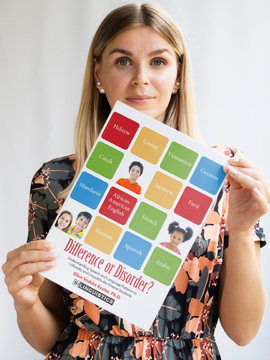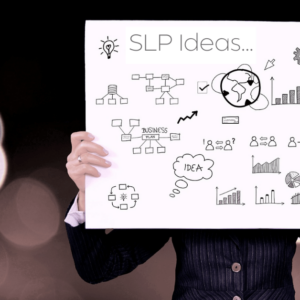The Power of Narrative as a Bilingual Tool
$22.00

90 MINUTES (0.15 ASHA CEUs)
Course Type: Video – 1 1/2 hours
ASHA Course Code: Diversity Equity and Inclusion – 7030
We live our lives and think in story format. This ability has evolved alongside human development and has facilitated the emergence and transfer of complex language. How can we leverage this innate drive to enhance the communication of our caseloads and at the same time honor their culture and language heritage?
Drawing from behavioral and cognitive sciences, join Dr. Trina Spencer as she introduces the concept of manipulative frames and other mechanisms of learning that undergird the design of potent bilingual interventions.
Additional Information
| Population | School Age |
|---|---|
| Duration | 1.5 hours |
| Credit | .15 Continuing Education Units |
| Topics | Diversity, Equity, & Inclusion (DEI), Exp/Rec Language |
| Format | Video |
Dr. Spencer is a senior scientist and director of the Juniper Gardens Children’s Project at University of Kansas and holds faculty appointments in the Departments of Applied Behavioral Sciences, Speech-Language-Hearing Sciences, and Special Education. Drawing from speech-language pathology, applied linguistics, education, and behavior analysis, she concentrates her efforts on the oral academic language that serves as a foundation to the reading and writing of preK to 3rd grade students, with and without disabilities. She maintains a spirited research agenda that has yielded 64 peer review publications, 150 invited presentations, $15M in external funding, and several commercialized curricula, interventions, professional development systems, and assessment tools. Her multi-tiered interventions and assessment tools are used broadly in the United States, but also internationally. Dr. Spencer values researcher-practitioner partnerships, community engagement, and cross disciplinary collaborations to accomplish high impact and innovative applied research.
Financial – Dr. Spencer is an author of a commercialized narrative intervention program and receives financial benefits related to its sale. Graphics from the intervention will be shown, although the intervention is not the focus of the talk.
Non-financial – No relevant nonfinancial relationship exists
A narrative is defined as a spoken or written (including Augmentative and Alternative Communication modalities) monological telling or retelling of past events, either real or imaginary. Importantly, narratives contain causally related events told/retold in a temporal sequence acceptable to the verbal community in which it is used. Narratives are powerful tools. We live our lives and think in story format. This ability has evolved alongside human development and has facilitated the emergence and transfer of complex language. The narrative is useful, versatile, and pervasive because the human brain is skilled at detecting patterns, whether humans are aware of them or not.
Bilingual and narrative intervention researchers who capitalize on this fact will discover that the patterns of narrative, and language generally, allow for rapid transfer across contexts, modalities, and languages. In this talk, Dr. Spencer will unpack the discourse-, sentence-, and word-level patterns that are inextricably integrated within a narrative. These include the macrostructural schema made up of story grammar elements, the order and emphasis of which are culturally and linguistically derived. At the sentence level, syntactical patterns feature the use of subordinate and relative clauses and other types of elaborated noun phrases to establish complexity. The word-level patterns consist of morphological knowledge, general academic words, and domain specific concepts.
Alongside an integrated model of narrative-based academic language intervention, Dr. Spencer will present a cogent set of principles to guide the development of bilingual interventions that take advantage of shared schemas. Drawing from behavioral and cognitive sciences, Dr. Spencer will introduce the concept of manipulative frames and other mechanisms of learning that undergird the design of bilingual interventions. When narrative manipulative frames are address instead of specific content, it is possible to accelerate learning and produce generative language repertoires in multiple languages.
Participants will be able to:
• Participants will describe the science that supports the use of oral storytelling for bilingual interventions.
• Participants will define academic language and explain how their nesting is advantageous.
• Participants will explain how to teach manipulative frames to maximize generativity of learned repertoires and to facilitate cross-linguistic transfer.
Time-Ordered Agenda
05 minutes–Introductions and disclosures
15 minutes– Introduction of Narrative and Academic Language
10 minutes– Neuroscience support for oral storytelling
45 minutes- Five Instructional Design Principles
05 minutes- Closing
10 minutes- Moderated question and answer session
Need CEUs?

 Share
Share
 Tweet
Tweet
 LinkedIn
LinkedIn
 Pin
Pin
 Email
Email







